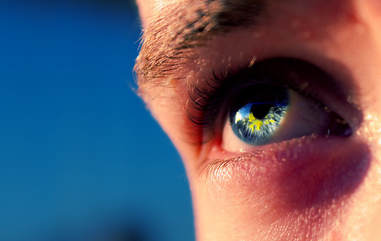What is EMDR?
The mind can often heal itself naturally, in the same way as the body does. Much of this natural coping mechanism occurs during sleep, particularly during rapid eye movement (REM) sleep. Francine Shapiro developed Eye Movement Desensitization and Reprocessing (EMDR) in 1987, utilizing this natural process in order to successfully treat Post-traumatic Stress Disorder (PTSD). Since then, EMDR has been used to effectively treat a wide range of mental health problems.
*The information on this page was adapted from www.getselfhelp.co.uk and www.thetraumacentre.com
*The information on this page was adapted from www.getselfhelp.co.uk and www.thetraumacentre.com
What happens when you are traumatized?Most of the time, your body routinely manages new information and experiences without you being aware of it. However, when something out of the ordinary occurs and you are traumatized by an overwhelming event (e.g. car accident) or by being repeatedly subjected to distress (e.g. childhood neglect), your natural coping mechanisms can become overloaded. This overloading can result in disturbing experiences remaining frozen in your brain or being "unprocessed." Such unprocessed memories and feelings are stored in the limbic system of your brain in a "raw" and emotional form, rather than in a verbal "story" mode. This limbic system maintains traumatic memories in an isolated memory network that is associated with emotions and physical sensations, which are disconnected from the brain's cortex where we use language to store memories. EMDR helps create the connections between your brain's memory networks, enabling your brain to process the traumatic memory in a very natural way.
|
What is an EMDR session like?EMDR utilizes the natural health ability of your body. After a thorough assessment and development of a treatment plan, you will be asked specific questions about a particular disturbing memory. Eye movements, similar to those during REM sleep, will be recreated simply by asking you to watch the therapist's finger moving backwards and forwards across your visual field. Sometimes, a bar of moving lights or headphones is used instead. The eye movements will last for a short while and then stop. You will then be asked to report back on the experiences you have had during each of these sets of eye movements. Experiences during a session may include changes in thoughts, images, and feelings.
With repeated sets of eye movements, the memory tends to change in such a way that it loses its painful intensity and simply becomes a neutral memory of an event in the past. Other associated memories may heal at the same time. This linking of related memories can lead to a dramatic improvement in many aspects of your life. |
What can EMDR be used for?In addition to its use for treatment of Post-Traumatic Stress Disorder, EMDR has been successfully used to treat:
Anxiety and panic attacks, Depression, Anger, Phobias, Sleep problems, Grief and loss, Addictions, Pain (including phantom limb pain), Performance anxiety, Feelings of worthlessness/low self-esteem. EMDR can be used with children, adolescents, and adults. Children and adolescents with attentional struggles, disruptive and oppositional behavior can benefit from EMDR. |
EMDR Consultation
6Rick Marsili, founder of Connections Counseling of Western Pennsylvania, LLC, is available to provide individual and group consultation to those in EMDR Therapy Training and to those seeking Certification. Rick is an Approved Consultant in EMDR. The fee for one hour of individual consultation is $60.00. The fee for two hours of group consultation is $60.00. Consultation can be done in person, skype or phone. If you would like more information or would like to schedule consultation please contact Rick at Connections Counseling of Western Pennsylvania. LLC. The phone number is 878-295-8768.



